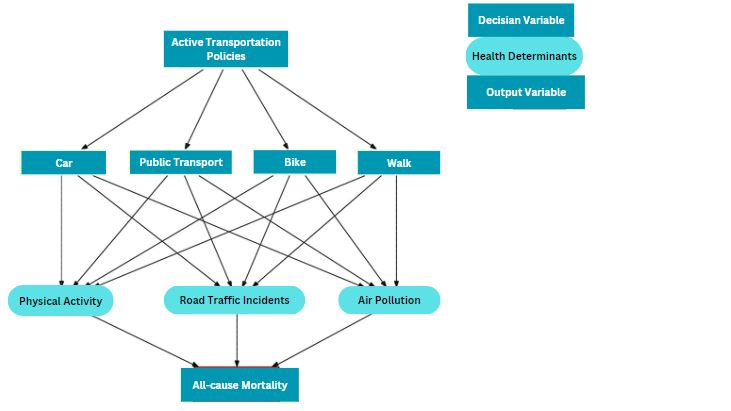Smart Cities, Healthy Citizens: Integrating Urban Public Health in Urban Planning
Keywords:
Urban Public Health, Accessible Healthcare, Data and Technology Integration, Smart Cities, Physical Activity, Air QualityAbstract
Urban planning that incorporates public health considerations is crucial for the development of smart cities that prioritize the well-being and health of their citizens. This study presents key findings on integrating urban public health into urban planning to create environments that promote physical and mental well-being. The study identifies and explores several crucial considerations for achieving this integration.The first consideration is healthy urban design, which involves designing urban spaces and infrastructure that promote physical activity, accessibility, and safety. Walkable neighborhoods, well-connected sidewalks, bike lanes, and efficient public transit systems encourage active transportation. Incorporating parks, green spaces, and recreational facilities provide opportunities for exercise and outdoor activities, while inclusive and accessible public spaces reduce pollution and noise.Air quality and pollution control emerge as another vital consideration. The study highlights the importance of implementing policies to mitigate air pollution, reduce emissions, and promote clean energy sources. Designing urban areas to minimize exposure to pollution sources, increasing green spaces and urban forests, and utilizing smart technologies for monitoring air quality are key strategies for improving air quality and mitigating the heat island effect.Ensuring accessible healthcare and services is essential for equitable public health. The research emphasizes the need to strategically locate healthcare facilities to serve both urban and underserved areas. Attention should be given to the needs of vulnerable populations, such as the elderly, low-income communities, and individuals with disabilities. The integration of telemedicine and digital health solutions can enhance access to healthcare services.Promoting active transportation and safety is crucial in urban planning. The study highlights the importance of pedestrian and cyclist safety through well-designed crosswalks, traffic calming measures, and lighting systems. Dedicated cycling infrastructure, traffic management strategies, and smart traffic systems contribute to reducing accidents and improving road safety.Noise pollution management is an often overlooked aspect of urban planning. The research emphasizes the significance of designing buildings with sound insulation and implementing zoning regulations to separate noise-sensitive areas from noise-generating activities. Green buffers and sound barriers are effective in mitigating noise impacts, while monitoring noise levels and enforcing regulations minimize excessive noise.The study also underscores the importance of integrating elements that promote mental health and social well-being into urban planning. Creating inclusive and socially connected neighborhoods, designing public spaces that encourage socialization and relaxation, and prioritizing the provision of community centers and social services all contribute to mental health and well-being.Data and technology integration play a crucial role in informing urban planning decisions and improving public health outcomes. The study highlights the value of collecting and analyzing health-related data to identify health disparities, understand the impact of the built environment on health, and guide decision-making processes. Utilizing smart technologies, such as wearable devices and health monitoring systems, promotes individual health awareness and facilitates targeted interventions.Evaluation and monitoring are essential components of successful urban planning. Continuously monitoring and evaluating the impact of urban planning decisions on public health outcomes, collecting data on health indicators, and using this information to assess intervention effectiveness and inform future planning efforts are critical for sustainable development.Integrating urban public health considerations into urban planning enables the creation of smart and healthy environments that support the well-being of citizens. This holistic approach ensures that urban development fosters economic growth, technological advancement, and the health and happiness of the people who live and work in these cities.

Downloads
Published
How to Cite
Issue
Section
License
Publication Licensing Terms:
Copyright: Authors retain copyright, granting the journal first publication under a Creative Commons Attribution (CC BY) license.
Licensing: The CC BY license allows any use with proper attribution and a link to the journal's website.
Author's Warranties: Authors confirm their work is original and does not violate any third-party rights.
Reuse and Distribution: Authors are free to share their work online after publication.
Attribution: Users must credit the work as specified under the CC BY license without suggesting author endorsement.
Responsibility: Authors bear responsibility for copyright infringement issues.
